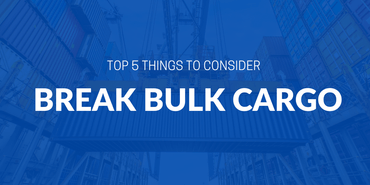
What is a Bobtail?



![]()
In the shipping and logistics industry, there are many different modes of transport, including ships, vehicles, trains, planes, and trucks. When it comes to the latter, there are also many different classifications to suit different needs. Probably the type of truck you’re most familiar with is the standard, with a large trailer attached to its back and moving in six to eight wheels.
However, there is a unique classification of trucks that is well-known in the logistics industry. It’s called the bobtail truck, or also known as the bobtail tractor or bobtail trailer. Right now you might be wondering what that is and what exactly it looks like. In this article, we talk about the bobtail truck, including its definition, what it’s for, how big it is, and more.
What is a Bobtail Truck?
A bobtail truck is a classification of trucks but with a unique appearance. It is known as a semi-truck, with the same front features but without the usual trailer attached at the back. Hence, it’s relatively shorter than a normal truck or tractor.
You might be wondering why it’s called a bobtail truck. This name comes from its characteristic of a short tractor. It is strongly related to the bobtail cat with a bobbed and shorted tail. In the same way, a bobtail truck has a short tail because it is not carrying a trailer.
What is a BobTail Used for?
Bobtail trucks are not typically used to transport goods or cargo. Instead, it is what a vehicle is called in between trips when a truck drops off a trailer and goes on transit to pick up a new one. In that duration in between dropping off the old trailer and picking up the replacement, it is a bobtail tractor.
How Big is a Bobtail Truck?
A bobtail truck is significantly smaller than a regular truck because it does not have the advantage of the length of a connected trailer. On average, bobtail tractors are only 24 feet long and measure 13 feet and 4 inches in height and 96 inches in width.
Despite these meager dimensions, a bobtail truck can weigh a hefty amount. Their weight can reach up to 20,000 pounds, including two drivers, full fuel, and DEF tanks. This weight is spread over the front, center, and back of the truck, with 10,000 pounds on the steer axle and up to 9,000 pounds on the drive axles.
This weight, however, is not a one-size-fits-all for all bobtail trucks out there. Some trucks can weigh lighter or heavier, depending on their size and unique specifications.
Why is a Bobtail Truck Dangerous?
Bobtail trucks are essentially regular trucks but without trailers. Removing the trailer changes the weight, length, and volume of the truck, which coincidentally also alters how it’s navigated and operated. Without the weight of a trailer, a tractor will behave differently and have less weight in its rear wheels. The weight will be more centered in the front, which makes it unstable on the road.
Inexperienced drivers will have a difficult time driving a bobtail truck. Because of the shift in the center of gravity and the difference in weight without the trailer, braking aggressively or doing sudden maneuvers spin the truck out of control and can cause accidents not only to the driver but also to other motorists and civilians. There have been a lot of instances of bobtail trucks flipping from the front because of sudden braking, injuring the driver and the passengers of the vehicle proceeding it.
A bobtail truck is more dangerous than one with a trailer that adds weight to the rear of the truck. Hence, drivers of bobtail tractors should maintain a bigger distance from other motorists on the road. This is because a dangerous bobtail charge can cause serious accidents on the road.
Bobtail trucks should only be driven by seasoned truck drivers with experience driving without the weight of a trailer. Plus, careful considerations must be taken on the road, such as avoiding bobtailing when the road is slippery and being cautious about its distance from other vehicles, being gentle with the breaks and maneuvering, etc. There are regulations that govern bobtails for the safety of motorists and pedestrians.
Deadheading vs. Bobtailing
Bobtailing and deadheading have a tendency of being used interchangeably, but they are very different concepts that should not be confused with each other. Bobtailing is when a truck drives through the road without carrying a trailer, often because it just dropped off an old trailer and is on its way to pick up the replacement.
On the other hand, deadheading is the term used to refer to a truck pulling an empty trailer to a destination. This usually happens when all deliveries have been made and the trailer does not have any more cargo. The truck will deadhead to its parking slot or facility.
Related Articles


